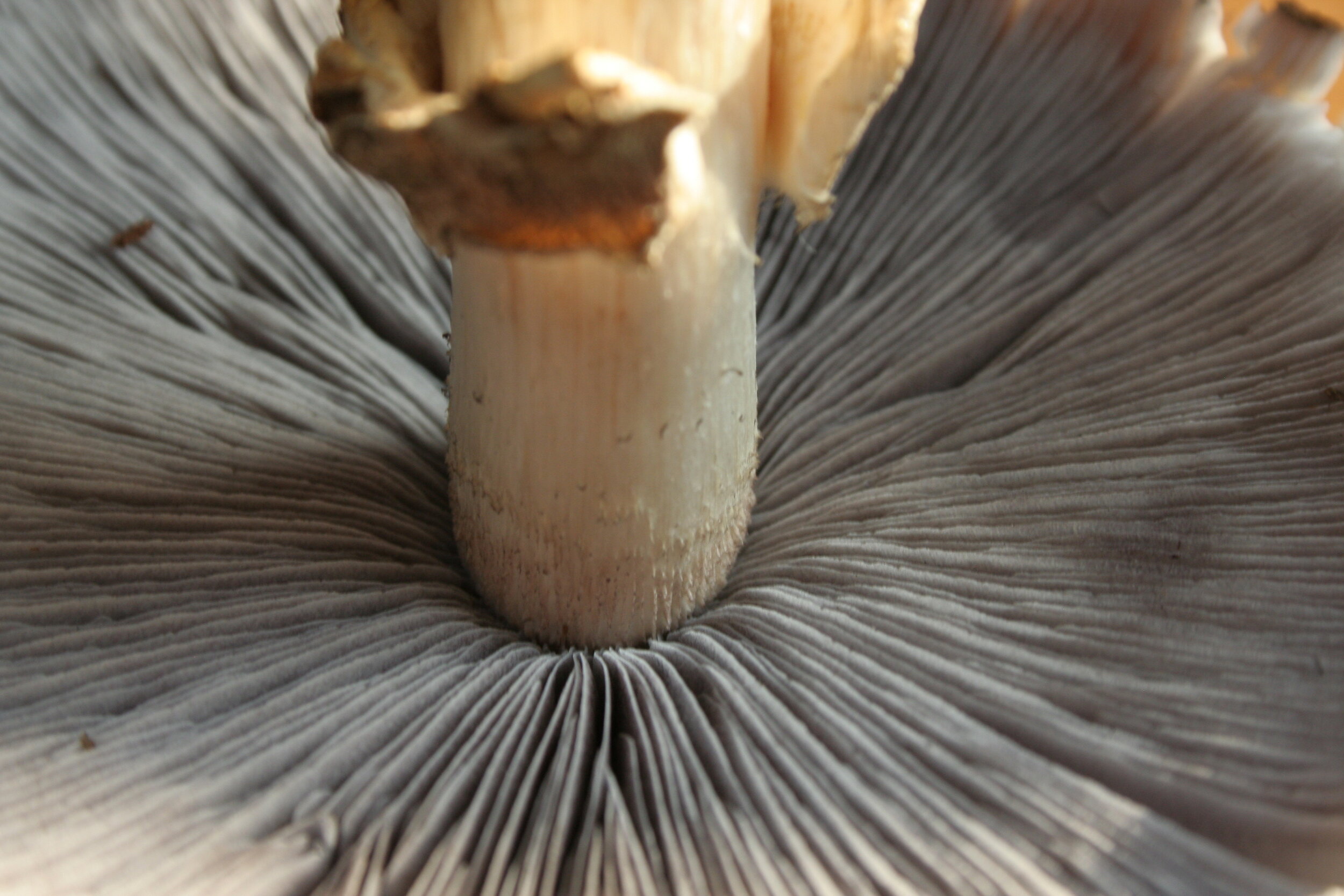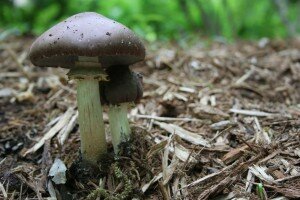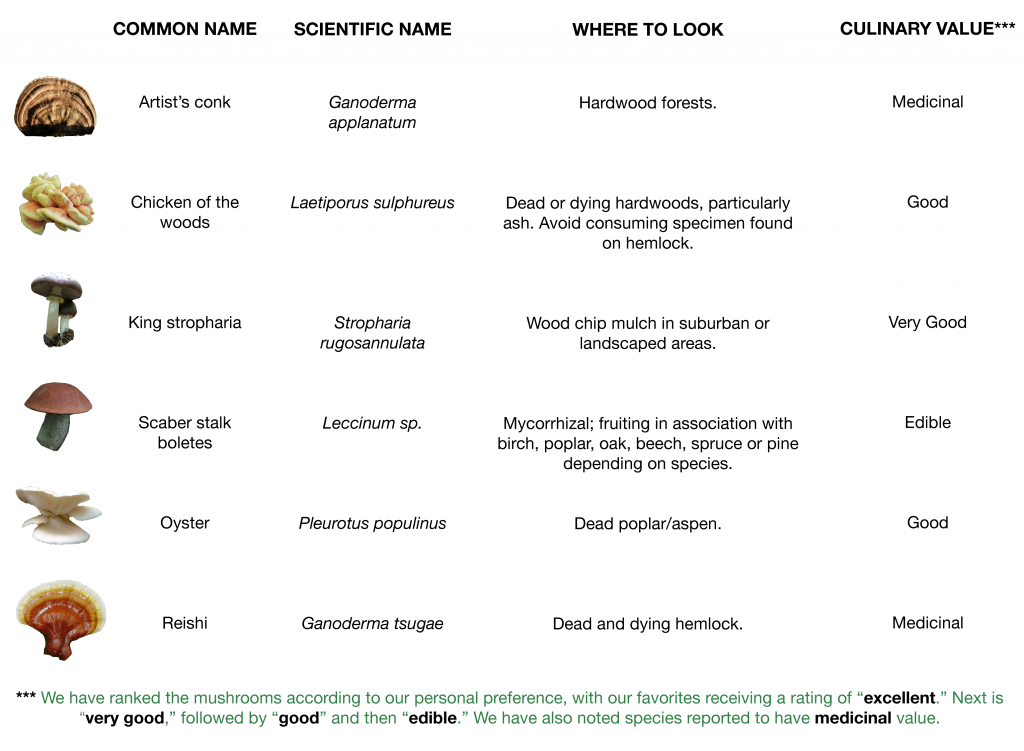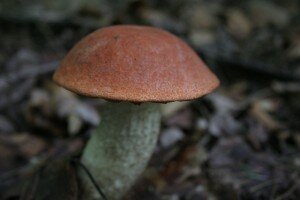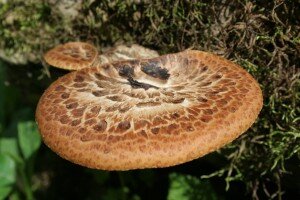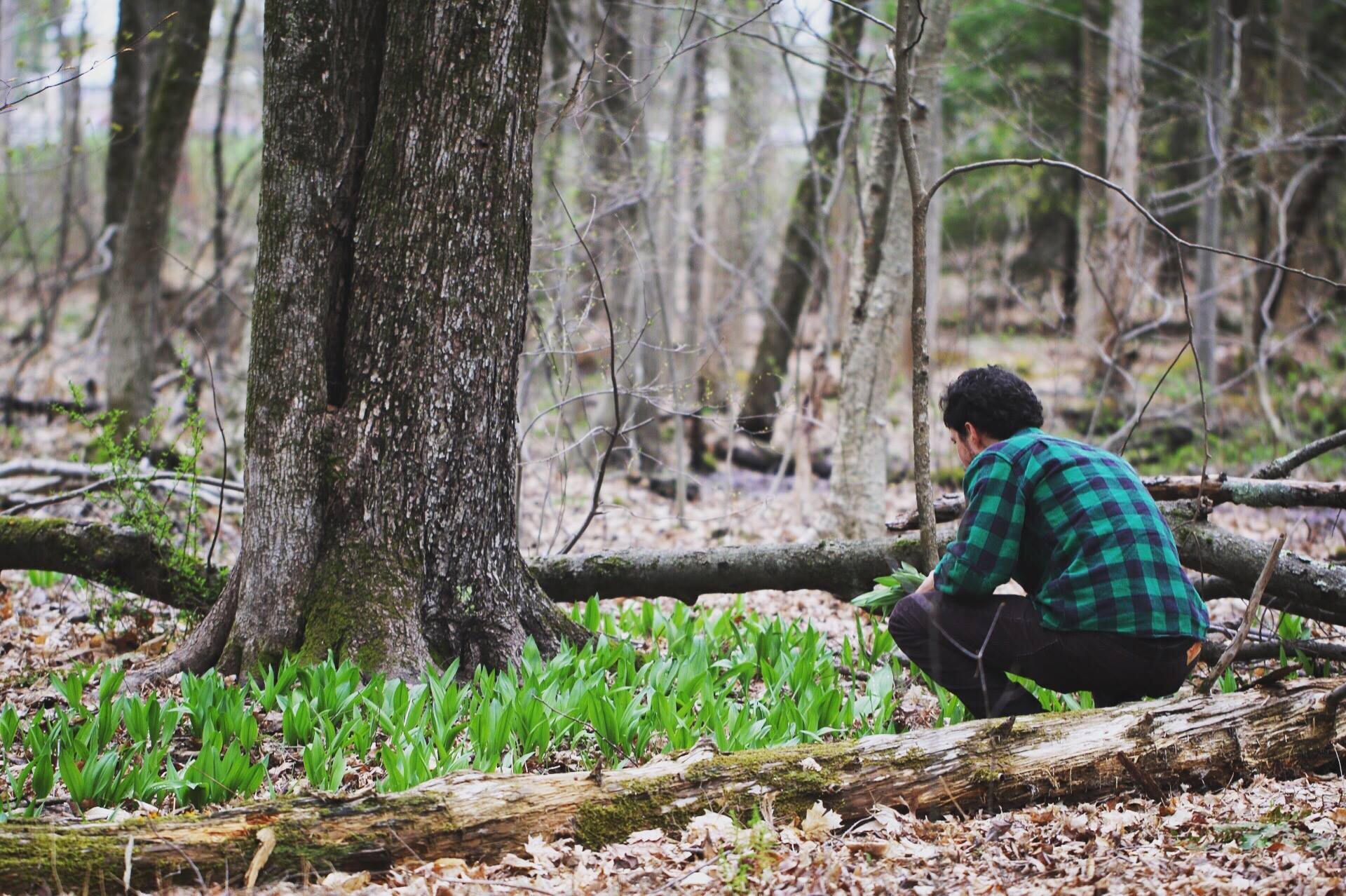
Blog
ForageCast: Week of August 23, 2011
Last week we had rain. This week we have mushrooms! Seemingly overnight, the woods have exploded with a colorful and diverse cast of fungi. I am overjoyed but, quite frankly, a bit overwhelmed. After weeks of waiting, interrupted by the occasional flush of mediocre mushrooms, the past few days I have felt like a kid in a candy store as I wander through the woods. Porcini! Bicolor boletes! Smooth chanterelles! Parasols! Black trumpets!
ForageCast: Week of August 15, 2011
As much as I have been enjoying this summer’s catch of shrimp russulas and lobster mushrooms, there’s nothing like a freshly picked Maine lobster. Ithaca’s gorges sure are gorgeous, but when we got time off work, Jenna and I decided to leave our landlocked town and head for the salty coast. So, we apologize for not updating the ForageCast the past couple weeks, but we are back just in time.
Mushrooms in the Garden Workshop
Do you like the idea of having gourmet mushrooms springing up among your crops in the garden? Come to a “Mushrooms in the Garden” workshop at the Ithaca Community Gardens on Sunday, August 28, as part of the Garden Education Program’s summer workshop series. The workshop is free and open to the public.
Mushroom Cultivation at the Cornell Youth Grow Summit
Over 35 high school students gathered outside Cornell University’s Plant Science building on a sunny late June morning for “Mushroom Cultivation for Fun and Profit,” a workshop I co-led at the 2011 Youth Grow Summit with Steve Gabriel – a Cornell Garden-Based Learning co-worker and Program Director for the Finger Lakes Permaculture Institute.
ForageCast: Week of July 18, 2011
After an abundant beginning to the chanterelle and black trumpet season, the recent bout of spectacular weather has sent the mushrooms back into hiding. I am still finding chanterelles and black trumpets, but, as local master forager Carl Whittaker recently remarked, there is nothing more “depressing” than sorting through vast swaths of dried up chanterelles, hoping to find a few decent specimens.
Lobster Mushroom: Fungus or Crustacean?
While Ithaca’s gorges mean relief from the summer heat is never far away, sometimes I miss the crashing waves and salty smell of the ocean. I may be hundreds of miles inland, but my thoughts drifted off to sea today when I found two mushrooms that blur the line between fungus and crustacean.
ForageCast: Week of July 5, 2011
Remember how much fun you had as a child stomping on puffballs and watching them erupt into a cloud of dusty spores? You may not have realized it at the time, but you were helping a tasty edible mushroom distribute its trillion-strong legion of spores.
ForageCast: Week of June 26, 2011
My tongue has been reunited with an old friend – the black trumpet. Last summer’s drought took its toll on the trumpet crop, and this already hard to spot mushroom disappeared from Ithaca’s forests altogether. Despite many hours spent on hands and knees combing through moss patches, I did not find a single black, fragrant morsel.
The Restorative Reishi
Something subversive is brewing in the dimly lit depths of my pantry. Two mason jars sit atop a nondescript white shelf, stuffed with thinly sliced reishi mushrooms steeping in cheap vodka.
ForageCast: Week of June 20, 2011
The summer solstice may not happen until tomorrow, but my summer has already begun. Sure, it’s felt like summer in Ithaca for a few weeks now, with 90-degree days and daily swims in the gorges. But for me, nothing heralds the arrival of summer like the first chanterelle, in all its fragrant, golden glory.
ForageCast: Week of June 12, 2011
This week we have two new additions to the ForageCast – the scaber stalk boletes and artist’s conk. As a perennial polypore, the artist's conk can be found year-round in Northeastern hardwood forests. However, it arrives on the ForageCast this week since most of the local conks have now developed their new annual layer of milky white, fragrant pores. During the winter months the conk is dormant, its underside hard and brown and lacking its distinctive woodsy odor. There is not much sense harvesting it at this stage, since it is weaker medicinally and artists cannot etch on its creamy pores.
Leccinums: Insipid or Inspiring?
I want to love Leccinums, the scaber stalk boletes. They are hefty and often abundant from June through October in Ithaca, and their solid, pockmarked stalks make them profoundly satisfying to pick. In the right patch, I can fill up a basket in minutes, and Leccinums are some of the only mushrooms that actually provide a good bicep workout as I carry my haul out of the woods.
Introducing the ForageCast
One of the most common mistakes beginning foragers make is to search for mushrooms without any specific target species in mind, assuming they will take home whatever they find for identification. Though this approach may occasionally be fruitful, it does not result in many grand mushroom feasts.
Stroph Surprise
After nearly getting lost last week tromping through brambles and poison ivy in search of the spring’s last morels, I was reminded that sometimes the best mushroom patches are right under our noses. On Thursday, I went for a lunch break saunter behind my workplace on Cornell’s Ag Quad. I wasn’t explicitly looking for mushrooms, but I still found my greedy gaze continually returning to the ground in search of sylvan booty.
The Oft-Overlooked Dryad's Saddle
Since my blissful encounter with a black morel on May 2, I have had many a fruitless morel foray. Now that I have seen morels this spring with my own eyes, I am even more frantic than ever in my single-minded pursuit of these elusive edibles. To make myself feel just a smidgen better about my empty basket, I have been gathering tender young specimens of Dryad’s saddle (Polyporus squamosus).
Dreaming of Morels
I am wandering through the spring woods, the soggy ground squishing beneath my feet. Out of the corner of my eye, I spot the unmistakable honeycombed cap of a morel. Bending down to take a closer look, I realize this morel is not alone. A second morel pops into my vision, followed by a third. My morel eyes are on now, and hundreds, perhaps thousands, begin to spring up as if to announce, “We are here!”
blog archive by year:
